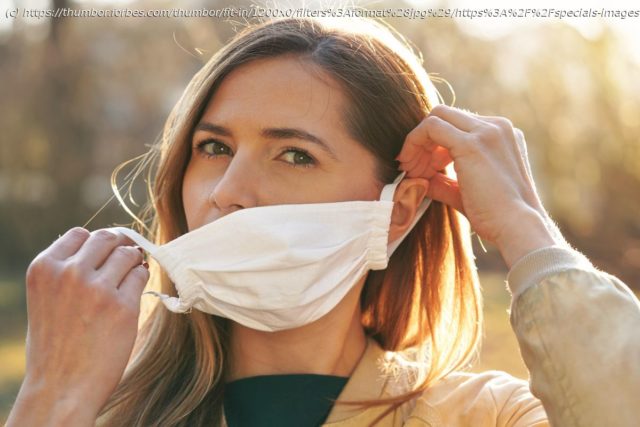Should you wear a face mask outdoors to help stop Coronavirus from spreading? The scientific research so far suggests that it’s probably not necessary, but your decision should also depend on where you’re going.
It’s arguably the most divisive personal choice of the pandemic period: Should you wear a face mask while outdoors to help stop Coronavirus from spreading?
Although the main way that SARS-CoV-2 coronavirus spreads from person to person wasn’t initially certain, scientists now say the world should face the reality that the virus is transmitted through the air. Many believe that airborne transmission is actually the dominant route for the spread of Covid-19.
Coronavirus is carried by droplets or aerosols that leave the body when a person coughs, sneezes, breathes or talks. As a consequence, the chances of catching or spreading the virus will obviously increase when you’re close to other people.
The odds should be higher in a confined area, where virus-laden particles will circulate in the air. Following this reasoning, if there’s no significant risk of transmitting the virus in an unconfined space, you might not need a mask.
But is it really true that you’re relatively safe from worrying about Covid-19 while out in the open? Almost all studies (that I’m aware of) have taken place inside buildings, [detecting viruses in the air within hospital rooms][3], for instance, and little research has compared indoor transmission to what happens outdoors. Some work is currently being peer-reviewed, however.
An unpublished study of 110 Covid-19 cases in Japan tested individuals then used contact-tracing to follow-up on secondary cases. The results showed that people are much more likely to catch Coronavirus indoors: the odds that a primary case transmitted the disease in a closed environment was 18.7 times greater compared to the open air.
In an unpublished review article on how the virus spreads in different settings, epidemiologists at the London School of Hygiene & Tropical Medicine summarized what we know: « The difference in transmission risk between households and larger communal settings is unclear, as is the difference between indoor and outdoor transmission. »
One factor that affects the relative risk of catching a virus is how far it could potentially travel through the air. Some scientists distinguish between ‘droplet’ and ‘aerosol’ (using a cut-off size such as 0.






